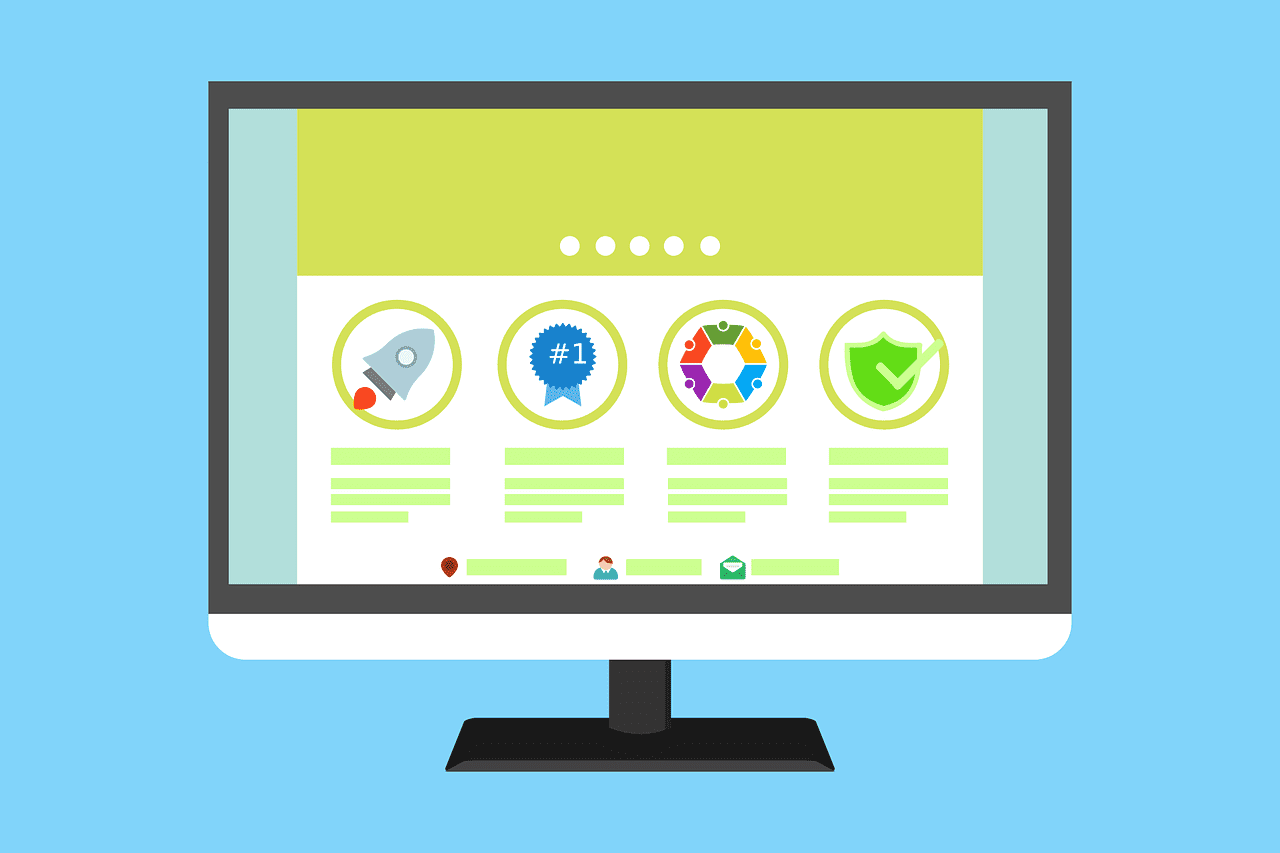We’re sure you understand why a good landing page is so essential to your success, so let’s look at what a high-converting landing page should include. This information we’re sharing with you is the result of years of testing and millions of dollars in ad spend, and has proved successful across dozens of different local business verticals. It’s what we’ve found works the best for local businesses looking to get their phones ringing.
Header
The header is the section at the very top of your site. It should be relatively narrow because you don’t want it taking up too much of the all-important above-the-fold space at the top of your site.
There are just two things to include in the header: your logo, which goes on the far left side of the header, and a call to action, which goes on the far right side of the header.
This call to action should be in a fairly large font so it stands out and people can read it easily. For a local business, we almost always have the business’s phone number here.
However, don’t just put the phone number up there. Add a specific call to action above the phone number to give people a reason to call you. We recommend something like “Call Now for a Free Estimate/Consultation/Quote.”
Video or Image
Under the main headline, on the left side of the page, you should have a video or image. (This video or image could go either above or below the main headline. We’ve tried it both ways, and it doesn’t seem to make much of a difference in conversion rates.)
The strategy for the image or video is pretty much like it is for the rest of the landing page: Put your best foot forward. You simply want something that looks professional and helps convey the benefits you offer. For a video, keep it on the short side: around a minute or a few minutes at the most.
For the image, make sure it’s relevant to your business. Ideally it’s a photo of you/your staff looking happy or one that visually shows the benefits your clients get from using your services.
Headline/Subheadline
Hands down, the headline is the most important copy on your landing page. It’s so important because it’s going to be the most read copy on the page and will largely determine whether your prospects pay attention to the rest of the page or simply hit the back button.
There’s no shortage of detailed information out there on copywriting and creating headlines. Most of them require you to think really deeply about this, come up with a customer avatar, think about a lot of theoretical stuff, come up with 100 ideas, etc. A lot of this information is really helpful; we’re not dismissing it at all. But our goal is to make things as simple and straightforward for you as possible.
Obviously we can’t write your headline for you — you’ll still have to do some thinking about this and at least come up with a list of your best benefits and main selling points. However, we’re going to share a headline template that’s proved to be successful on a number of landing pages we’ve created for clients.
Here’s the headline and subheadline template:
Would You Like to … (Insert Benefit 1, Benefit 2, Benefit 3)
If the answer is “YES,” then call us now for your free consultation and learn …
Let’s look at a few examples and then discuss this formula in more detail.
Here’s one for a title loan company:
Would You Like Fast Cash in 15 Minutes or Less With No Credit Check at the Lowest Rates in Las Vegas AND You Keep Your Car?
If the answer is “YES,” then call us now at (888) 555-5555, or come visit us at (location address).
For a mortgage broker:
Would You Like to Refinance Your Home to Today’s Low Rates and Lower Your Monthly Payments Even If You Owe More Than Your Home Is Worth?
If the answer is “YES,” then call now for your free consultation where you’ll discover. . .
One of the keys to the success of this headline template is putting your prospects in “Yes” mode, which psychologically makes them more likely to take you up on your offer.
At this point, your prospect will see the yes, so you’re getting them in a “yes” state of mind. That’s why we follow up with “If the answer is YES . . .” to build off them being in that state of saying yes, then we follow up with a call to action. That call to action leads into the promise of discovering the biggest benefit you offer prospects.
Body Copy/Bullet Points
This section goes under your headline and subheadline on the left side of the page and expands on the promise/offer/value proposition they started.
Most people aren’t going to read all your copy; they’re going to skim it. So a few short paragraphs are all you need along with three to five bullet points. Bullet points are a list of short, punchy sentences that convey the main benefits/key points that prospects should know about your business. Again, keep things short, sweet, and focused on the main benefits you offer your clients.
Contact Form
Not everyone who lands on your page is going to call. So for those who don’t want to call, the landing page should have a contact form where they can submit their information.
The form should have a clear call to action at the top that reinforces why they should contact you and what benefit they’ll receive for doing so. For the form itself, only ask for the information you absolutely need from a prospect — that’s generally a name, email address, phone number, and an optional “comments” field where they can enter any comments or questions they have.
You can also get creative with the button that a visitor needs to click to submit their information. You can use a generic “Submit” button or a more action/benefit-oriented button such as “Get Free Estimate” or “Get Free Consultation.”
The “Proof Zone”
The space under the contact form is a great place to demonstrate your business’s credibility. We call it the “Proof Zone” because the information here should help prove to your prospects that you are a credible and trustworthy business.
How do you do that? One common way is to provide testimonials from happy clients. Having these testimonials in the form of a video or audio clip is very powerful. A text testimonial with a photo is the next best option.
With testimonials, the more specific they are and the more they reinforce the main benefits of your business, the better. Here’s an example of a lame testimonial:
“These guys are great. I’m really happy with them.” — Joe
Compare that to this testimonial:
“Following my car accident three years ago, I’d experienced nearly constant chronic back pain. I tried physical therapy, pain meds, and a few natural remedies, and nothing helped. I visited Dr. Smith after a friend recommended her, and I’m glad I did. After six visits, I’m moving better than I have in years and am virtually pain free!” — Joe Williams, Seattle, WA
If you don’t have testimonials, there are plenty of other ways to demonstrate your business’s credibility. These include using logos of media outlets you’ve been featured on, logos of well-known clients, and/or special recognition/credentials/awards your business has received from industry/business organizations.
Another Call to Action
At the bottom of the page, below the fold, reinforce your call to action. Put your phone number there again so people don’t have to scroll up to find it. And again remind them of the benefit they’ll receive for taking action and contacting you.
Tiny Links at the Bottom of Your Landing Page
If it were up to us, there would be no links on your landing page because we want people focused on the one action we want them to take. However, since we’re advertising on Google, we need to keep them happy and follow their rules. And to satisfy Google’s terms and conditions, there need to be a few links on the page.
We place these, in a very small font, in the footer at the bottom of the page. The bare minimum you need to include here are links to a privacy policy, terms and conditions, and a contact page. The contact page exists so Google knows you’re a real business and should include both your phone number and your physical address.
Source – Entrepreneur.com

















